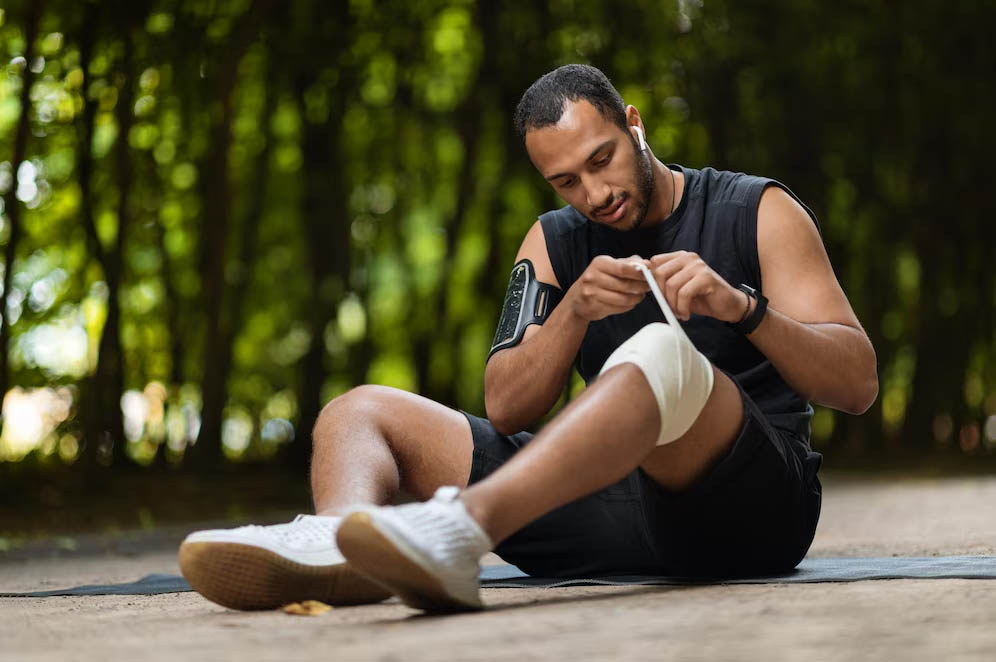Physical Address
304 North Cardinal St.
Dorchester Center, MA 02124
Physical Address
304 North Cardinal St.
Dorchester Center, MA 02124

Did you know that over 8.6 million sports-related injuries occur each year in the United States alone? Whether you’re a weekend warrior or a professional athlete, knowing how to prevent common sports injuries can save you from pain, recovery time, and potential long-term damage. Sports injuries don’t just interrupt your training schedule—they can impact your daily life and overall well-being. By implementing simple preventative strategies, you can significantly reduce your risk and stay active longer. Let’s explore how you can protect yourself while enjoying the activities you love.
Before diving into prevention strategies, it’s important to recognize the injuries you’re trying to avoid. Learning about these common issues can help you take targeted steps to prevent common sports injuries effectively.
These soft tissue injuries affect ligaments (sprains) and muscles/tendons (strains). Ankle sprains are particularly common in sports involving jumping or quick direction changes, while hamstring strains frequently plague runners and athletes in stop-start sports.
From ACL tears to runner’s knee, the knee joint is vulnerable in almost every sport. These injuries often result from improper landing techniques, sudden changes in direction, or overuse.
Rotator cuff injuries and dislocations are prevalent in sports requiring overhead movements like swimming, baseball, and tennis.
These tiny cracks in bones typically develop in weight-bearing areas due to repetitive force or sudden increases in training intensity.
A proper warm-up and cool-down routine is one of the most effective ways to prevent common sports injuries. Think of your body like an engine—it performs best when properly primed before exertion and given time to gradually power down afterward.
Before activity, focus on dynamic stretches that mimic the movements you’ll perform:
These movements increase blood flow, raise muscle temperature, and prepare your nervous system for action.
After exercise, incorporate static stretches held for 20-30 seconds to improve flexibility and reduce muscle tension. This helps your body recover and can prevent common sports injuries by maintaining range of motion.
Start with lower intensity movements and gradually increase to match your activity level. This progression helps your cardiovascular system adjust and prepares your muscles for more demanding work.
Building strength isn’t just about performance—it’s fundamental to injury prevention. Strong muscles provide better support for joints and improve overall body mechanics.
A strong core (abdominals, lower back, and pelvis) serves as your body’s foundation. Exercises like planks, bird-dogs, and bridges help stabilize your spine and pelvis, which can prevent common sports injuries throughout the kinetic chain.
Incorporating balance exercises like single-leg stands, bosu ball work, or yoga poses improves proprioception—your body’s awareness of its position in space. Better balance means fewer falls and awkward landings that can cause injuries.
Target the muscle groups most used in your particular sport. For example:
This focused approach helps prevent common sports injuries by addressing the specific demands of your activity.

The right gear can significantly reduce your injury risk. Don’t underestimate the importance of proper equipment when looking to prevent common sports injuries.
Invest in sport-specific shoes that provide appropriate support for your foot type and activity. Replace shoes regularly—most athletic footwear loses its cushioning after 300-500 miles or 3-6 months of regular use.
Depending on your sport, consider:
For those with previous injuries or known vulnerabilities, braces can provide additional stability:
Remember that even the best equipment can’t prevent common sports injuries if it’s improperly fitted or worn out.
Perhaps the most overlooked aspect of injury prevention is adequate recovery. Pushing through pain often leads to more serious problems down the road.
Learn to distinguish between normal muscle fatigue and potential injury signals:
Addressing these early warning signs can prevent common sports injuries from developing into chronic problems.
Incorporate at least 1-2 rest days weekly. During intense training periods, consider active recovery like gentle swimming or walking instead of complete rest.
Quality sleep (7-9 hours nightly) and proper nutrition support tissue repair and immune function. Hydration is equally important—even mild dehydration can increase injury risk.
Varying your activities reduces repetitive stress on the same muscles and joints. If you’re a runner, try cycling or swimming. Basketball players might benefit from yoga. This variety helps prevent common sports injuries caused by overuse.
Most athletic shoes should be replaced every 300-500 miles or when you notice visible wear that might affect their ability to prevent common sports injuries.
Mild soreness 24-48 hours after exercise (DOMS) is normal, but sharp pain during activity may indicate injury requiring attention.
Dynamic stretching before and static stretching after is the optimal combination to prevent common sports injuries.
While mild discomfort during recovery is normal, pain that alters your movement patterns should be addressed by a healthcare professional.
Taking proactive steps to prevent common sports injuries isn’t just about avoiding pain—it’s about ensuring you can enjoy physical activity throughout your lifetime. By incorporating proper warm-ups, strength training, appropriate equipment, and adequate recovery into your routine, you’re investing in your long-term athletic potential. Remember that consistency in prevention is key. Share these tips with fellow athletes and subscribe to our newsletter for more expert advice on staying healthy and active – AnyOPT.